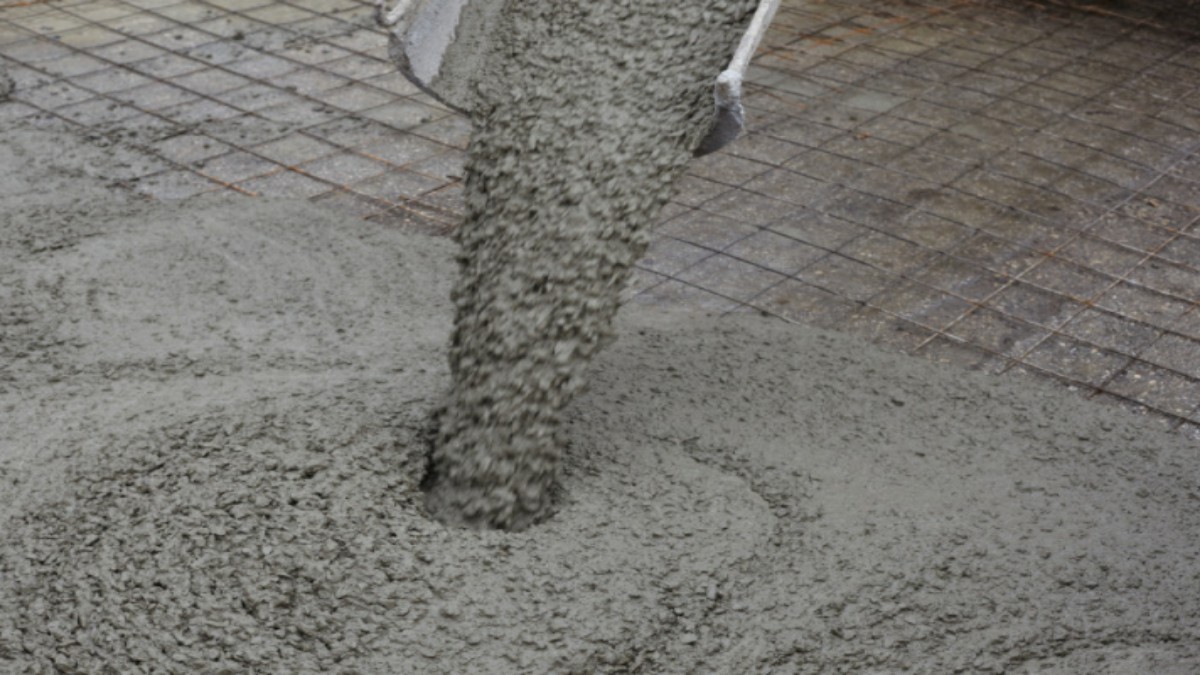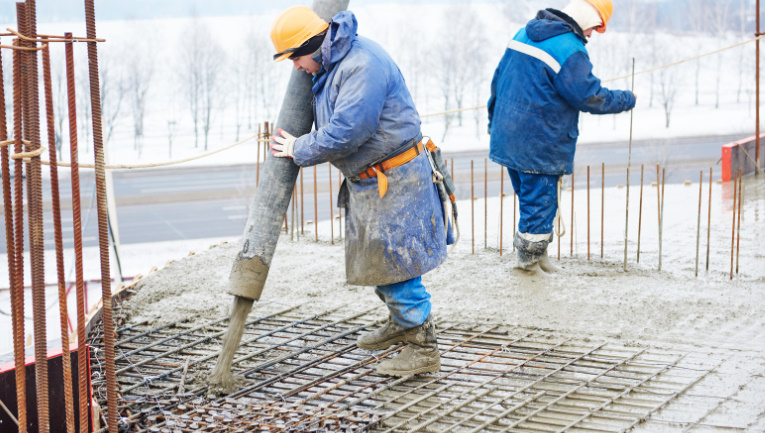The water-cement ratio is a fundamental concept in the field of construction and civil engineering. The water-cement ratio relates the amount of water used in preparing concrete or cement paste to the amount of cementitious material present. This ratio plays a critical role in determining the strength, durability, and workability of the resulting concrete. The water-cement ratio directly affects the hydration process, which is the chemical reaction that occurs between cement and water, leading to the hardening and setting of concrete. Therefore, it is important to carefully consider the water-cement ratio when designing and producing concrete, as it can significantly impact the quality and performance of the final product.
Water to cement ratio – Significance
Concrete is manufactured by mixing cement, aggregates, and water in designed proportions. The process of proportioning is done as a volumetric (nominal mix) or by weight (design mix). Cement is the main ingredient of the concrete and acts as a binding material. In combination with water, cement undergoes a chemical reaction leading to the formation of thick and sticky gels responsible for the adhesion between the ingredients. The chemical process is called the heat of hydration. Cement and water are the most important ingredients of concrete and their ratios have a huge impact on the quality and strength of concrete. So for a design mix of required strength, the ratio of water to cement has to be maintained in the right proportions.
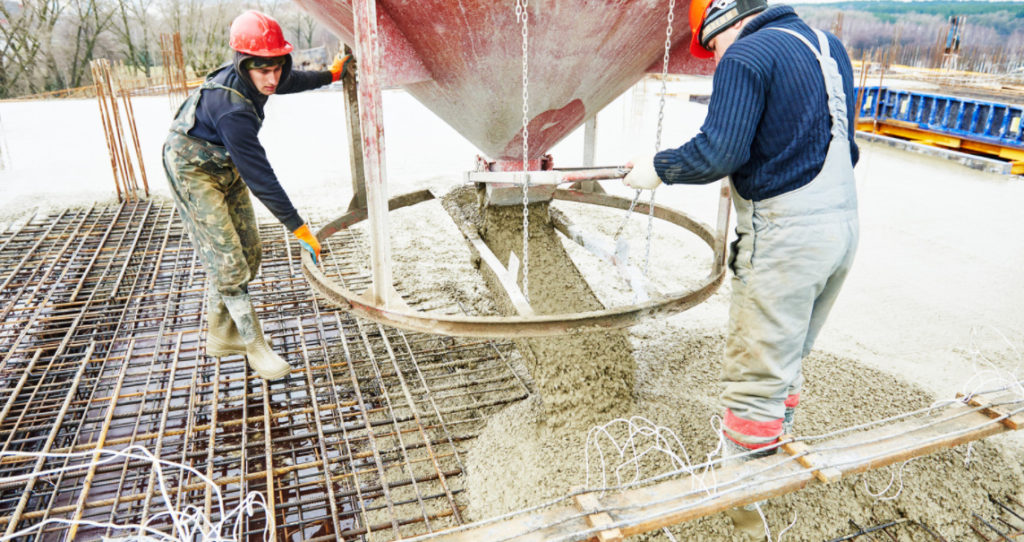
Water-cement ratio – As per IS CODE
Cement requires 23% water for initiating the chemical reaction and another 15% for the formation of gel to fill the voids.38% percent by weight of water to cement ratio is essential for the complete hydration process.
The Indian Standard Code (IS 10262:2009) provides a detailed Water-Cement Ratio Table that specifies the recommended values of water-cement ratio for different types of concrete mixes, based on the intended application and the environmental conditions. Here is a summary of the Water-Cement Ratio Table as per the IS code:
- For Mild exposure conditions (Plain concrete without reinforcement): 0.55
- For Moderate exposure conditions (Reinforced concrete): 0.5
- For Severe exposure conditions (Concrete in contact with seawater, acid, or sulfate-rich soils): 0.45
- For Very severe exposure conditions (Concrete exposed to freezing and thawing cycles, or high-temperature environments): 0.40
It is important to note that the water-cement ratio should be adjusted based on the quality of materials used, the mix design, and the level of compaction. A higher water-cement ratio can result in lower strength and durability, while a lower ratio can lead to difficulties in workability and compaction. Therefore, it is crucial to maintain the recommended water-cement ratio to ensure the desired properties and performance of the concrete.
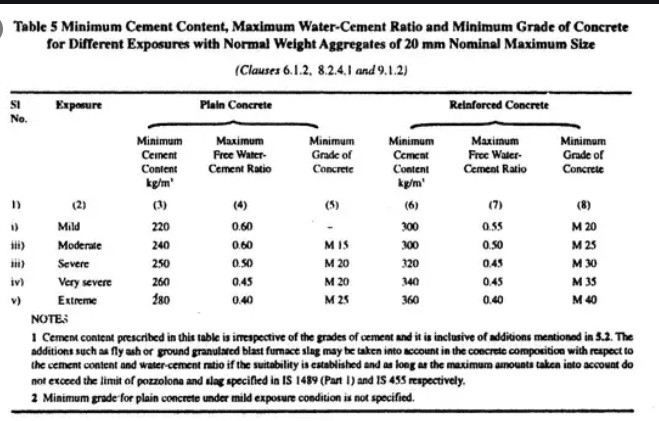
As per IS 10262, the water-cement ratio varies from 0.4 to 0.6 based on exposure conditions. For the calculation of water to cement ratio, we need the cement content of the design mix. The minimum cement content is to be confirmed from IS 10253 for different grades.
For Mix 1:2:4 Moderate exposure condition water requirement would be-
Plain concrete(moderate) Table 5 IS 10252
The Minimum cement content for M15=240 kg/ m3
and Min water cement ratio =water/cement =0.60
=water/240=0.60
Min water requirement for mix=240*.60=120 liters
For Design mix, the W/C Ratio will depend upon the workability, strength requirements.
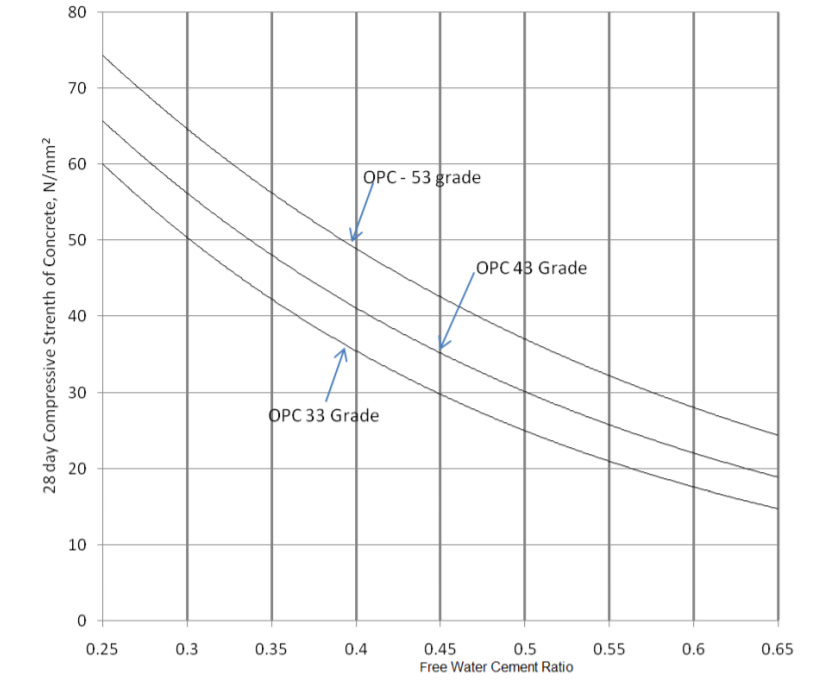
Water cement ratio and strength of concrete
Water-cement ratio has a significant impact on the strength of concrete. The amount of water used in the mix affects the workability of concrete, but an excessive amount of water can result in weaker concrete. The water-cement ratio should be kept as low as possible while still maintaining the required workability.
When there is excess water in the concrete mix, it creates voids in the concrete, which can lead to reduced strength and durability. In addition, the excess water can cause the concrete to shrink, leading to cracks and other defects.
On the other hand, a lower water-cement ratio creates a denser mix with fewer voids, resulting in a stronger and more durable concrete. However, too low of a water-cement ratio can make the mix difficult to work with and can lead to inadequate compaction.
Therefore, it is important to carefully consider the water-cement ratio when designing and producing concrete to achieve the desired strength and workability. Testing and monitoring the water-cement ratio during production can help ensure consistent and high-quality concrete.
Water-cement ratio effect on the workability of concrete
The water cement ratio has a huge impact on the workability and strength of the concrete. The workability of concrete means the ability of concrete to perform a concreting process involving mixing, transporting, placing, compacting with ease, and without any segregation. In other words, the workability of concrete indicates the ability of concrete to work easily. W/C ratio is also an important consideration for the workability of concrete. A high w/c ratio leads to higher workability because inter particle lubrication is increased. Similarly, a lower w/c ratio leads to lower workability because there is a lack of inter particle lubrication. However the w/c ratio is not the only parameter that decides the strength of concrete. The strength of concrete depends on a lot of factors like aggregate quality, cement proportions, etc.
Effect of water cement ratio on the permeability of concrete
Also Read : QUALITY TESTS TO BE DONE ON CONCRETE- SLUMP TEST
Effect of high w/c ratio
A high w/c ratio leads to higher workability because inter particle lubrication is increased. However, the overall concrete strength is reduced with the increase in the w/c ratio. The addition of more water gives dilute paste that has more pores at the micro-level and segregation of concrete.
The aggregates and cement particles take the excess water that is present in concrete. This consumption is uncontrollable if a large excess of water is present in the concrete. Hence, separate water channels are created resulting in bleeding on the surface. This creates weak zones in concrete that are susceptible to cracking under service loads. Concrete with a higher w/c ratio is also more susceptible to cracking and shrinkage. Shrinkage leads to micro-cracks, which are zones of weakness.
Once the fresh concrete is placed, excess water is squeezed out of the paste. When there is a large excess of water, that water bleeds out onto the surface. The micro-channels and passages that were created inside the concrete to allow that water to flow become weak zones. These weak zones are responsible for shrinkage cracks and micro-cracks when applied with service loads.
Effect of low w/c ratio
Lower water to cement ratio can contribute to high strength and high-quality concrete. For higher-strength concrete, lower ratios are used, along with a plasticizer to increase flowability. But the w/c ratio alone cannot give good concrete. A good mix proportion and quality aggregates and binding materials contribute to a good mix design. A low w/c ratio is hence one of the factors influencing good mix design.
Using low w/c ratio is the usual way to achieve high strength and high-quality concrete, but it does not guarantee that the resulting concrete should possess sufficient strength. Unless the aggregate gradation and proportion are balanced with the correct amount of cement paste, excessive shrinkage, cracking and curling can result. Good concrete results from good mix design and low w/c ratio is just a part of a perfect design mix.

